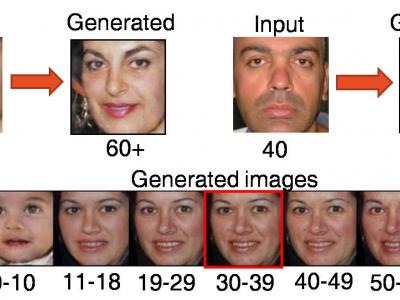Documents
Poster
FACE AGING AS IMAGE-TO-IMAGE TRANSLATION USING SHARED-LATENT SPACE GENERATIVE ADVERSARIAL NETWORKS

- Citation Author(s):
- Submitted by:
- C Kotropoulos
- Last updated:
- 28 November 2018 - 10:52pm
- Document Type:
- Poster
- Document Year:
- 2018
- Event:
- Presenters:
- Constantine Kotropoulos
- Paper Code:
- GS-P.5
- Categories:
- Log in to post comments
Here, a novel approach is proposed to generate age progression (i.e., future looks) and regression (i.e., previous looks) of persons based on their face images. The proposed method addresses face aging as an unsupervised image-to-image translation problem where the goal is to translate a face image belonging to an age class to an image of
a different age class. To address this problem, we resort to adversarial training and extend the UNsupervised Image-to-image Translation (UNIT) framework to multi-domain image-to-image translation, since several age classes are considered. Due to the shared latent space constraint of UNIT, the faces belonging to each age class/domain are forced to be mapped to a shared-latent representation. Low-level features are used to perform the transitions between
the domains and to generate age progressed/regressed images. In addition, the most personal and abstract features of faces are preserved. The proposed Aging-UNIT framework is compared to state-of-the-art techniques and the ground truth. Promising results are demonstrated, which are attributed to the ability of the proposed method to capture the subtle aging transitions.


Comments
GlobalSIP2018 poster
Revised poster